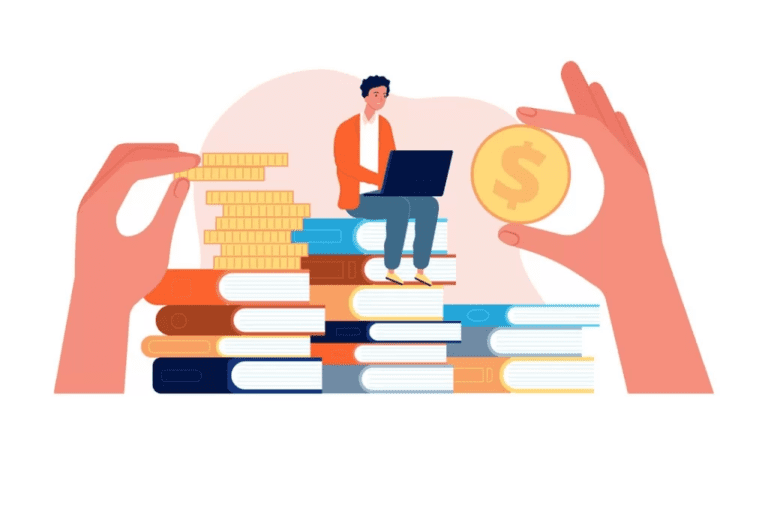Do you know what is a student loan? Have a sneak peek of every detail about it in this guide. Paying debt is not what many people like doing, and that’s why most people in business and entrepreneurs run away from them due to the ripple effects on their business and income as a whole. But sometimes, debts can not be wholly done away with, even for entrepreneurs; and business owners, but the way these debts are dealt with matters.
For someone like you who’s navigating the academic world; student loans are one of the best ways to cover college costs with no stress. But these days, students seem to be getting choked at the payment of these loans.
However, the essential boxes to tick when acquiring some of these loans as a student have been analyzed for you in this article.
How to Get a Student Loan?
There are two main ways to get student loans – The federal student loans issued by the US Department of Education and private student loans. The two differ in interest rates, eligibility requirements, loan modification options, and student loan forgiveness programs.
Federal loans are readily available, and their repayment structure is flexible. In contrast, private student loans will help you cover all the costs you need while in school; even though they come with their management terms and conditions.
Generally, student loans are issued by the federal government or private lenders to help pay for your college or graduate school. The amount borrowed goes to school, books, student housing, and other education-related expenses.

We empower you to save for Student Loan Repayment.
How Much Student Loan Can You Get?
This is relative due to your estimated needs in school. Besides, once your student loan application is approved, funds are sent directly to the school to cover tuition, fees, and housing on campus. After that, the remaining balance is paid to you as the student.
How Do You Pay Back Your Loan?
Depending on the type of loan, repayment plans begin after you graduate and get a job or when you are still in school. This is because private loans do not offer the same protections as federal loans. The general advice is to apply for private student loans after you have exhausted all federal options.
Every day, I get different stories of how students have difficulties paying their loans, coupled with other debts they acquire after school. Many of us have dreams of buying our own houses, obtaining more certifications that qualify us for more promotions; or even being hired at our dream workplace. But the pressure of paying our loans can become so much that all we think of is how to pay back, forcing us to abandon other pre-planned life achievements.
I am not saying it’s a bad thing for you to get a loan or not to think about how to settle them, but I want you to know that you can still get a student loan with little or no stress while still achieving all you ever dreamt of while paying off your loans on the side.
I have heard stories of students who, after graduation, couldn’t pay their loans for years. And since they come with the interest rates that accumulate daily, they become a big deal. Eventually, they struggle to meet the payment deadlines because of other bills they have to sort out daily.
Don’t Be Dishearten!
These stories are not meant to scare you or discourage you from taking a student loan in a bid to further your education; but to educate you more on what most people face after school in their quest to pay back these loans. It also seeks to help you avoid the mental stress of loan-interest accumulation after a long period.
Yes, federal loans are affordable and have a low interest rate that students can afford. Still, these federal loans can’t take care of all the bills you will need as a student because of the current state of the economy. You’re aware of the pandemic that caused a total lockdown of major activities worldwide, thus affecting the income of both the government and the people of the world.
How to Get Out of Student Loan Debt?
In this article, I will be sharing with you the best student loans that you can acquire, that even after graduation, you will be able to pay without hassling on your loan repayment.
Harriet, one of my friends, once shared with me how she struggled to pay for her loan and vowed that her siblings would not pass through what she faced. In her words, she said, “Paying off my student loan was very difficult. I could not meet up with the exact date for payment, and the interest rate was always on the rise. My sisters plan to go to college, and I don’t want to discourage them from taking student loans. What do you think I should do?”.
Because of my years of experience with sorting student loans, I advised her. Today, they are out of school, with each of them doing well in their fields while paying their student loans. The mind-blowing part of this story is that they shared this advice with their friends and families, bringing smiles to their faces.
Story of Mary
Another person I like to talk about is Mary. Mary is a bright young lady who had high-flying results in her high school examinations. But she was scared of going to college because of the news she heard on how students find it challenging to pay off their student loans even after getting a well-paid job. I woke up to her long, ranting email one morning where she asked;” How can I go to college on loans with no trouble paying back after college?”
I was glad Mary could open up and still not bury her dreams of going to college by sending that email. I told Mary about Harriet’s siblings, who are doing well in their different fields while still paying their student loans.
When we met, our discussion revolved around how she could get these loans, do well in school, get a good job for herself and still get to pay her loans while still running her day-to-day activities. Mary decided to try out these loans. Now she is a graduate working for one of the biggest firms as legal personnel; and she is paying her student loans and still acquiring more degrees. Amazing, right?
One thing you should keep handy is before you apply for a loan, it’s wise enough for you to compare and contrast the rates several lenders offer you. This will help to understand the best interest rate and loan terms of each lender. I know these numbers can be a little complicated. So, instead of struggling with the calculations and comparing all that you have to pay back on your own, you should talk to someone experienced in this field who can put you through all it entails.
Affordable Loans
Thankfully, I know a few lenders who have been tested and trusted that offer student loans at a low and affordable rate that will make after-school living easy for you.
As you dream of college school and college, it’s crucial to think of the after school. Student loans will, of course, ease your way through school, but their aftermath can be detrimental to your dreams, forcing you to regret your decisions or hate the system. If loans are the options you have, then making the best decisions will have you thanking your stars forever! I hope that you do make them, regardless!
We hope you got your answer regarding what is a student loan and every single detail about it.










